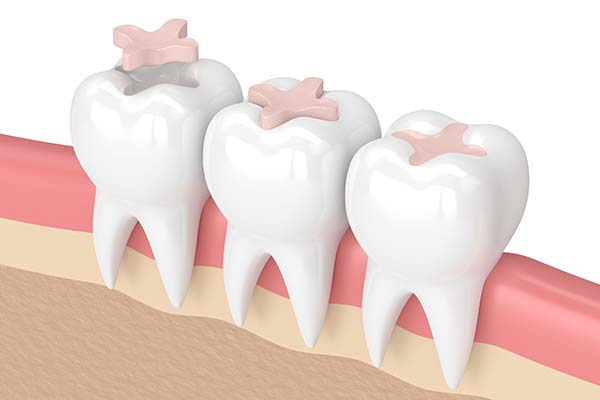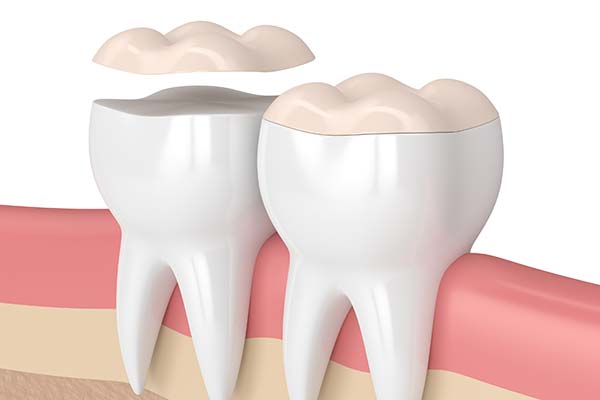Fillings
Why white fillings?
Most of us and even our dentists have dental fillings of one sort or another – often a byproduct of our lifestyles or gene pools.
In the days when amalgam fillings were the only option, aesthetics were always compromised. Now, in more image-conscious times, procedures allow dental fillings to be natural looking, and their use is commonplace.
It’s a fact we are more conscious than ever about the way we look and many people don’t want silver fillings that show when they laugh or smile.
For general maintenance, North Street Dental always uses composite, white dental fillings. They are durable and can be sculptured, colour-tailored and polished to match existing teeth.
In their own, right they are a cosmetic procedure and are used by the majority of private practices as a preferred option for less complicated repairs.
Inlay filling
How long do dental fillings last?
The life expectancy of white dental fillings depends greatly on where it is in your mouth, how heavily your teeth come together when you bite and how diligent you are with cleaning. Our dentists should be able to advise you.
How are white fillings made?
A resin base is used to bring together tooth-coloured plastic, powdered glass quartz, or other ceramic particles. Once cured with a special blue light beam, the result is a hard-wearing composite that can withstand the rigour of daily oral routines.
Composite filling preparation
After we prepare the tooth – our dentists here in North Street, Dudley will do all that is clinically possible to ensure we only remove compromised enamel and dentine. We then bond the filling onto the area.
After choosing a shade to match, typically we will build up the composite in layers. We use a harmless blue light with a specific colour spectrum to harden each application as we build up the filling.
Finally, we shape and highly polish to match the bite and overall oral cosmetic appearance.
Advantages of composite fillings
Aesthetics are the main advantage of composite fillings because we can successfully blend shades to create a perfect match. The bonding qualities are excellent in supporting the remaining tooth structure. This helps to prevent breakage and insulates nerves from excessive temperature changes.
Onlay filling
Inlays and onlays
Occasionally, our dentists may see fit to advise a dental inlay or onlay is used to restore a tooth that is not suitable for a regular filling.
What are inlays and onlays?
Inlays are generally small and placed within the biting surface of the tooth. An onlay, however, can cover a larger area of the tooth. They are part of the ‘adhesive’ dentistry family of therapies and are exceptionally hardwearing.
We can use them in most areas of the mouth. We take an impression of the prepared cavity and place a temporary filling while we make the onlay or inlay in the laboratory.
We can use gold, composite or porcelain in the manufacturing process. After we make the inlay or onlay, our dentists will fix it in place with adhesive in a follow-up appointment.
Often they are seen as a half-way remedy between a traditional filling and a crown.
When are inlays and onlays used?
Where the nature of the damage or decay makes a filling impractical or where there is a compromise to long-term stability. The decayed or weak part of the tooth can be removed and replaced with an inlay or onlay. They are a replacement for the part of the tooth that has been removed in the preparation process and in some instances a preferred clinical option.
Want to know more?
Come and have a consultation with North Street Dental and Implant Clinic in Dudley, West Midlands. To arrange your consultation call us on 01384 254 067 or email us from the contact page.


